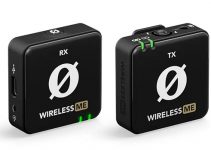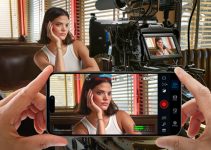Sony’s approach to DSLRs and mirrorless cameras has always been quite simple. The line is divided exactly into two, with the A6xxx series populated with cheaper Super 35 cameras and the A7 series with costlier and full-frame sensors. The latter has always been considered as top-of-the-line, while the A6xxx series is associated with the prosumer segment of the market more or less. But could that be really true?
Sensor size apart, there are a lot of characteristics in common between the two lineups. A pragmatic and down to earth guy like The Everyday Dad could not miss that as he decided to confront the Sony A7III and A6600 to figure out which one is the best for those content creators predominantly producing videos for the web.
The two counterparts in this comparison are more than similar with a lot of features which are exactly the same, starting with the megapixel count: both, in fact, sport a 24MP sensor, but in the A6600 case it’s an APS-C sized, while the same amount of pixels is spread over the wider full-frame sensor on the A7III.
Other than that, they both can capture beautiful 4K videos at 30 fps and can crank up the frame rate up to 120fps in Full HD.
Of course, both cameras have well known Sony E-Mount, meaning that you can swap lenses between the two while featuring one of the greatest assets you can find on a Sony camera, and that is the Face tracking AF.
Furthermore, both the A7III and A6600 take advantage of the new Z series batteries, which will be Sony’s obvious choice for future camera models.
Ok, that is for the specs, but what about the captured media? Well, as all Sony cameras across the whole lineup, you get the same exact codec. That means that you are locked in the XAVS-C, and if you are one of those that do not enjoy it, well, there’s nothing to do, you’re not going to love it this time around since it’s the same as always.
On top of that, we have our usual picture profiles: S-Log2, S-Log3, and HLG. There’s nothing missing on that side as both siblings are perfectly interchangeable in that regard.
That is, obviously, besides the crop factor due to the different size of the sensor. But thanks to the Super 35 mode on the Sony A7III, you can even use the exact same lens on either camera having the same field of view without vignetting.
Last but not least, the image quality produced by the siblings seems to be almost the same. And that is a testament to the A6600. The camera is cheaper, smaller and lighter, and surely it’s easier to build a rig around it. Could that be enough to make it the better choice?
Well, the Everyday Dad is kind of going an unexpected route this time, since he picks the GH5 instead, but we can connect the dots and get our own opinion here. Between the two Sony cameras, there are some choices to make. The A7III, for instance, could be the better option if you do a lot of low light shooting.
When it comes to image quality, however, both offerings are quite comparable, despite the fact that the A7III is from a previous generation. In return, the lightness and overall portability make the A6600 a great choice for online content creators and bloggers. So, unless you can afford to have multiple bodies, the A6600 seems to be the more reasonable choice, especially from a budget perspective.
[source: The Everyday Dad]
Sony Alpha a6600 Mirrorless Digital Camera (B&H, Amazon)
Sony Alpha a7 III Mirrorless Digital Camera (B&H, Amazon)
Disclaimer: As an Amazon Associate partner and participant in B&H and Adorama Affiliate programmes, we earn a small comission from each purchase made through the affiliate links listed above at no additional cost to you.



